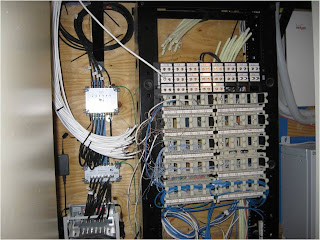Successful marketing means one thing and one thing only, the consumer was compelled to take action. That will happen in one of three ways, in person, via phone or via the Internet.
What happens after an anonymous web shopper has found information compelling enough to justify connecting or simply a great call to action. Let’s look at the 3 different possible paths and explore how this could play out… The possible outcomes are exactly the same as with any other marketing strategy; in person, via phone or via the internet. (Athos, Porthos and Aramis… Uhm… Where is d’Artagnan?)
![]() 1/ (Athos) In person: Getting a prospect to visit you is always best. Once you welcome a visitor nothing else should take precedent, make sure they know how important they are but be strategic. Ask for a few minutes to verify that you have everything ready (refreshments, paperwork, keys to visit units), place your cell on vibrate. Notify others that you are busy and handle any possible conflict in advance. First impressions are everything, if your first contact is in person; make sure they see that you are in control.
1/ (Athos) In person: Getting a prospect to visit you is always best. Once you welcome a visitor nothing else should take precedent, make sure they know how important they are but be strategic. Ask for a few minutes to verify that you have everything ready (refreshments, paperwork, keys to visit units), place your cell on vibrate. Notify others that you are busy and handle any possible conflict in advance. First impressions are everything, if your first contact is in person; make sure they see that you are in control.
2/ (Porthos) Via phone: Knowing how to handle a phone call is a skill set that is often overlooked or downplayed. I received a great advice about how to handle a call-in. Once a call is identified as being a prospect place them on hold. Do it very well by simply saying this; “Your call is very important and I want to give you my full attention, could hold for one minute, I just have a quick task to complete.” Use that minute (no more than one minute, 30s is best) to pull out your prepared lead form and focus. Remember that you cannot sign a lease over the phone, so what you are selling is the value of a visit or a follow up conversation. The best outcome is to set a face to face conversation or getting the prospect to complete an application.
3/ (Aramis) Via the Internet: Reaching out online (email or registration screen) is often perceived as a low level of commitment but it is as high as any other. Note that when I say this I exclude leads with inaccurate information because these are not leads. Here is why an online prospect is a high level of commitment; a consumer shares his/her personal contact information with you without having met or spoken with you. It is certainly one of the most convenient ways to reach out and it needs to be treated with the same level of importance than any other lead source. Make the communication very personal. You should try to call if the information permits. With the internet speed is everything, so make sure you can be as real time as possible. The biggest challenge of the internet is that leads are often handled via e-mail and you are now working with one of the slowest communication tool out there. Yes the e-mails travel fast but you are dependent upon mailboxes being opened. Whenever you can, try to shift the exchange from e-mail to a phone conversation or a visit in person.
I speak in this title about The Three Musketeers without the main character thus far; d’Artagnan. Here is how d’Artagnan enters our storyline. While the internet has grown incredibly in its ability to reach more people and do it faster it is still lacking the human factor. Remember this: websites don’t sell anything, people do. Making the most compelling argument to connect in person with anonymous web shoppers has to be a center point of your marketing efforts. Here is a though, explore how you could introduce people inside your site. Enable real-time conversations and open a fourth dimension in ways for consumers to connect. Offer a simple invitation to assist an anonymous web browser. Take them out of the internet dimension and move them into conversation. This way you will be able to gain more control over the outcome by managing a live exchange rather than letting the consumer draw its own conclusions in a matter of seconds. Live chat technology enables you to do all this very well and will help you take your website to next level. Are you prepared? Why do I ask? Because your consumers are, here are some stats about Facebook chat from February 2009 (that is 15 months ago or over 225M Facebook users ago!)
- 300+ million chat messages are sent per day
- 4+ million active channels at peak
- 67% of users have chatted at least once (so about 117 million people)
Your Internet marketing strategies are designed around creating more opportunities to gain clients, one of the most logical ways to that is to offer web shoppers as many ways as possible to connect with you and get into a conversation.
This post was written by Frédéric Guitton of activSalesAgent. Frédéric moved from France in 1996 and joined activSalesAgent in 2009 to introduce a live chat solution for the real estate industries. Frédéric's expertise is in Internet engagement processes, Web analytics and customer follow-ups.




